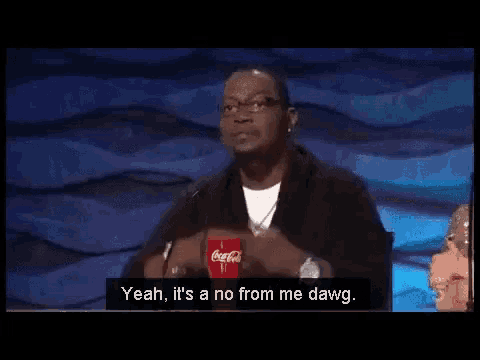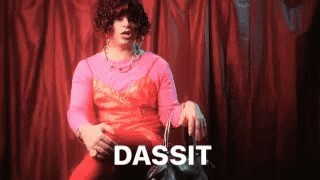I’m back with a timely conversation that I think will be really helpful to everyone reading but most helpful to content creators—especially this time of year with many holiday campaigns being produced at record quantities and speeds.
For those who prefer to listen, here’s a TL;DR audio version.
Before we even get into that, let’s chat about today’s legal concept. Some legal jargon, if you will. It’s common in the legal world and related to today’s discussion. What does it mean to sue someone? The Brittanica definition of sue is to use a legal process by which you try to get a court of law to force a person, company, or organization that has treated you unfairly or hurt you in some way to give you something or to do something.
I recently came across a series of influencers/content creators who add legal clauses to their captions. These clauses seem to imply that if the content creators’ content is repurposed, they will seek legal action. I would first question whether the use they are trying to avoid even rises to the level of infringement, for example, or some other unlawful act. If it does, I think it’s safe to assume that seeking actual legal action here would require a cease and desist or some other official action, and a simple clause in a caption isn’t going to cut it. I’ll touch more on how this disclaimer is generally ineffective, but that’s just a bonus point.

PLEASE CEASE, AND WHILE YOU’RE AT IT, DESIST.
So, what is a Cease and Desist? A C&D is a letter, or a “Demand Letter,” that goes out to a person or business asking them to stop a certain act or behavior that is harming you or your business. It also lets them know the consequences they would experience if they did not comply. The letters usually give the recipient a timeframe in which to respond and sometimes ask them to confirm they will stop. This is often done by asking them to sign at the bottom of the letter or confirm their understanding via email.
Why do people even send C&Ds? They’re most commonly sent when IP infringement, defamation, or harassment occurs. These are things people can experience often, especially small business owners or content creators. The question here is, can anyone send one? Technically, you do not need to be an attorney to send someone a C&D. BUT… and this is a very huge BUT. It is strongly recommended that you hire an attorney who specializes in that area of the law so that they can help you with this.
Attorneys use their powers of persuasion to carefully craft letters that include relevant facts and accurate rules of law. A letter crafted by an expert can make all of the difference when trying to convince someone to stop a certain action or behavior so that they avoid a worse outcome. An expert excerpt can convey this without being threatening. I cannot stress enough how much words matter here. A letter that sounds too aggressive, has no legal basis, or isn’t sent by an attorney may lack credibility and will more than likely be ignored by the recipient.
One of the reasons why it’s more common to see or hear about people discussing C&Ds is that you don’t need to be an attorney to send one. You can send one for anything at any time. However, the question here is, should you send one? Similar to my feelings about NDAs, these are not things we should be freely given out like candy. Can you scare someone off with these tactics? The answer is yes, very likely. But people who hire their own attorneys or who clearly understand their rights will often interpret a baseless C&D sent by a non-attorney as an empty threat, resulting in them ignoring it.
Again, anyone can send one, but there are other factors to consider. For example, if you’re sending someone a C&D for copyright infringement, not having a registered copyright can only get you so far, and this limits the amount of damages (aka money, honey) you can collect. If it’s trademark infringement, not having a registered trademark means you can only assert common law rights. If you’re asking yourself or googling what common law rights are, then you probably shouldn’t be sending your own cease and desist letters, respectfully 😬.
WHAT PEOPLE OFTEN GET WRONG
Sending a cease and desist letter will often leave people under the impression that they have some kind of legal power. A C&D letter is a letter sent to give someone notice or inform them of the harmful behavior. But it’s just that. A tool that provides information. It holds no authority that would get someone to comply without question like a court or restraining order would. The overall goal here is to convince the recipient that the risk of being sued in court is not worth taking, and so they should probably just comply.
Another misconception here is that if the C&D is sent by an attorney, the attorney can send one for anything. Let me break this one down. Say someone steals your business name, and they’re selling similar products or providing similar services. Can we send a C&D? Sure! And we totally should! However, let’s say someone is selling products that are similar to yours, and you decide that you’re under the impression they’re only doing it because you are doing it. Without additional/concrete facts, that’s a no-go. You cannot have a monopoly in your industry; competitors will exist, and there is nothing an attorney can or should do about it, so much so that our attorney code of conduct prohibits baseless and/or threatening notices that are only used as a form of intimidation.
It appears that people are also under the impression that C&Ds have to be aggressive, threatening, or nasty. Regardless of what you see on the show Suits or any other TV drama, if you discuss this with any experienced attorney negotiator, they will tell you that you catch more flies with honey than with vinegar. If you start this process off rudely or nasty, you’re only setting the tone for what could lead to a contentious back and forth. In my experience, people are less willing to cooperate when they’re met with this approach, even if they know they’re wrong.

MY PERSONAL EXPERIENCE WITH C&Ds
I send C&Ds often. At my firm, we send IP-related C&Ds. So these are all related to copyright or trademark infringement. I actually just sent one last week! I can’t share details as that one is an ongoing case, but it’s copyright-relate. Another example is a common one for creatives or content creators. I sent one to a magazine that used my client’s images in their print and digital publications without permission, credit, or compensation. It’s a no for me, and for my client of course. So, we asked for $5k per image used
Though I send many, I also turn down quite a few. I’m not sending a cease and desist that is based on a frivolous claim or for something that isn’t even illegal. Although I could entertain the process to make money, it’d be irresponsible for me to do that. It would also harm my reputation as an attorney. Sometimes, even if there is a valid concern or issue, a client will ask me to send a C&D and guarantee that I can get the recipient to stop whatever they’re doing without having to move forward with a suit, AKA empty threats. That’s also a no for me. A C&D will not force someone to do what you’re asking them to do. If you’re unprepared to proceed with litigation, you should sit this out. In other words, if you’re gonna be about it, you better make sure you’re prepared to be about it from beginning to end.
SOCIAL MEDIA C&D THREATS
I mentioned this at the top of this post. I’ve recently come across some strange C&D language/threats in captions. This is seen when creators organically post about a brand. I’m assuming this is to prevent the usage or distribution of the content without explicit permission from the content creator. Generally speaking, the rule on social media and most other social mediums is to ask for permission and then give credit. If you are a business/content creator/influencer/blogger/author and you’d like to use a piece of content created for someone else to promote your business, you need to ask for permission. In return, the owner of the content may rightfully ask for a fee. If you decide to use the content anyway without obtaining permission, they may be able to send you a C&D for the improper use of their content.
We see brands or companies avoid this on social media when we see them comment on a post asking if they could use the content they’re commenting on or inquiring about and then linking to their terms and conditions. The ones that know, know.
LET’S PLAY OUT A HYPOTHETICAL
You realize a company is using your copyrighted image. This means it’s a picture you took for your brand/company to which you own the copyright and have registered with the copyright office. THAT’S IMPORTANT. You never gave them permission to use the image, and you’ve never even worked with them. It looks like they swiped the image directly from one of your platforms. Let’s pause for a second and tap into AI again. If you missed that last post, it was a good one. There are so many apps and tools that allow you to remove watermarks and even add or change elements of the image with AI. It’s impressive and equally terrifying.
Okay, back to C&Ds. The first step here is to collect evidence. Screenshot the post(s) and/or the locations where they were published or utilized. Assuming you’re going to make great choices, you’ve hired an attorney, and your attorney will now review the evidence. After reviewing, they should be able to determine whether this is an infringement. If so, they begin to draft the C&D.
Next step, the C&D is sent. Now, I’ll share an example with you, but please note that this is in NO WAY SHAPE OR FORM me providing you with a template. I always intend to provide you with as much information as possible, but this is not legal advice. Again, for the love of all that is good, do not take this language and start sending out your own C&Ds (refer to all the reasons above).
CLIENT is the owner of Copyright Registration #XXXXX covering four (4) images which INFRINGER used for commercial gain without consent or authorization by CLIENT. Attached are the referenced images as well as the Copyright registration.
On or about DATE, CLIENT became aware that their images were used in [description of use and where]. CLIENT communicated with INFRINGER to inform them of the unauthorized use and to request that proper credit be added listing CLIENT as the owner of the images.
On DATE, CLIENT received a physical copy of [platform where images were also used] whereby their images were also included without the appropriate credit language.
I am contacting you in hopes of working out an amicable and quick resolution to the situation at hand. Based on the context in which the images were used, likely viewed by hundreds of thousands of consumers, we believe $5,000 per image is a reasonable compromise on damages to avoid the expense and headache of litigation. We would prefer to resolve this in a friendly and expeditious manner but if we are unable to do so, we believe we will have success seeking actual and statutory damages from the Courts.
Please confirm agreement by May 1. We look forward to resolving this soon.
The attorney then determines what a reasonable ask is as far as the dollar amount is concerned. That’s if you’re seeking a license fee. This is dependent on how the content or property was used. For example, a printed magazine warrants a higher dollar amount than if the image was only used in an online version of the article. If this case goes to litigation, copyright infringement is a “strict liability offense.” This means that the judge will only look at two things: 1. Did the infringer use the content? 2. Did they have permission?
If it’s determined that permission was not obtained, the infringer is pretty much automatically guilty. This means the copyright owner can receive up to $150k PER work infringed upon AND attorney fees. Here, we see how the C&D is a big incentive in getting the person to remove the work and pay or negotiate the licensing fee in order to avoid the possibility of paying large fines in court. Could you imagine a court-ordered $150k fee vs perhaps a $10k fee for the copyright owner? Could never be me.
When we sent the initial C&D, the hope was that the infringer would respond and comply. Instead of going to court, you negotiate a settlement amount. You get paid for the use of your work, and this company understands they can’t just use your copyrighted work without permission or compensation. At the risk of sounding like a broken record, this is where we find value in hiring an attorney because they are usually more knowledgeable in what fees like that can look like with respect to the industry at hand.
If you didn’t already have one, I'm hoping you now have a more realistic view and expectations regarding Cease and Desist letters. This might even be helpful if you’re ever met with a situation where you’re given a C&D. But, the key takeaways here should be, don’t go threatening people online with C&Ds unless you’re sure or you’ve consulted with an attorney. Also, please hire an attorney.
Alright, y’all. That’s the law with me, Pamela Rosario. Thanks for reading!





